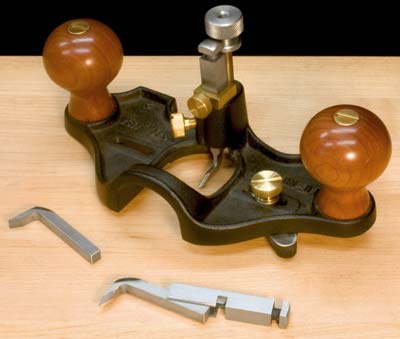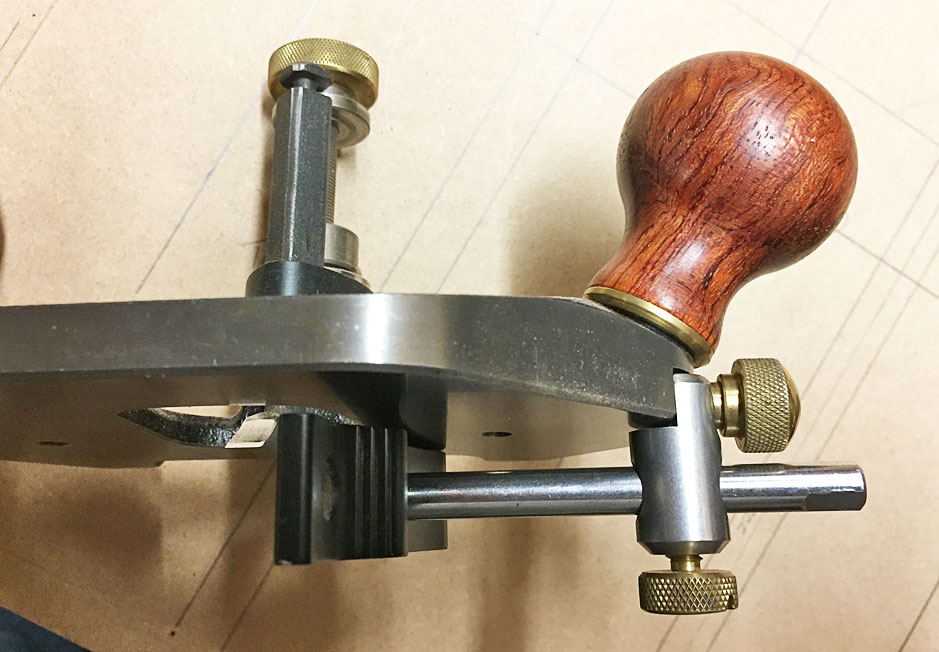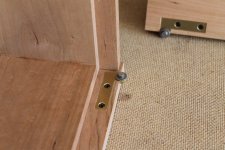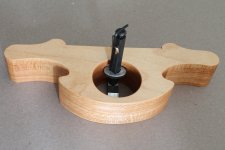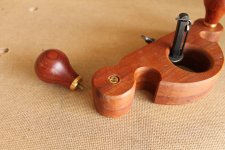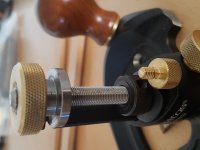No, the LN depth stop will not fit the Veritas - it is square and the Veritas is round. But there is no need for this. There is a bunch of misinformation floating here. Let me clear it up.
First of all, I am involved with testing Veritas planes before they enter production, so be aware of my relationship with them. I tested the Large Router plane before it went into production. The one feature I did not like was the original depth stop, which was a split ring. It worked well, but was fiddly, and especially so compared to the LN.
Here is the split ring setting up for a hinge mortice ...
In addition to time with the Veritas, Tom Lie Nielsen sent me his router plane for an article on router planes I wrote for the Australian Wood Review magazine (about 10 years ago now). I was impressed by the depth stop on the LN, and began agitating Lee Valley to change theirs.
LN (with the blade adapter and blades) ...
I made my own version for the Veritas ...
I've made others like this over the years, such as for router planes I have built. These use the Veritas router plane blades ...
In the meantime, Lee Valley came up with their replacement, and it differs by placement on the adjuster thread (mine is a pre-production version, hence the silver colour) ..
Now, contrary to what you may believe brass cannot damage steel, and therefore the brass screw on the depth gauge is unlikely to damage the steel thread on the adjuster.
It also tightens up very firmly. Even though I have spare depth stops I have made, I have not been tempted to use one on the Veritas.
The advantage of placing the depth stop on the adjuster thread is that it is out of the way when the blade is changed in- or out. If you look at the video (earlier), you will see what happened when the reviewer forgot it was there!

The Veritas fence is a work of art compared to the Stanley/LN fence. It has a wider range, and is easier to adjust. Note that both the LN and Veritas are reversible for straight and curved edges ...
Hinge morticing ...
Regards from Perth
Derek


